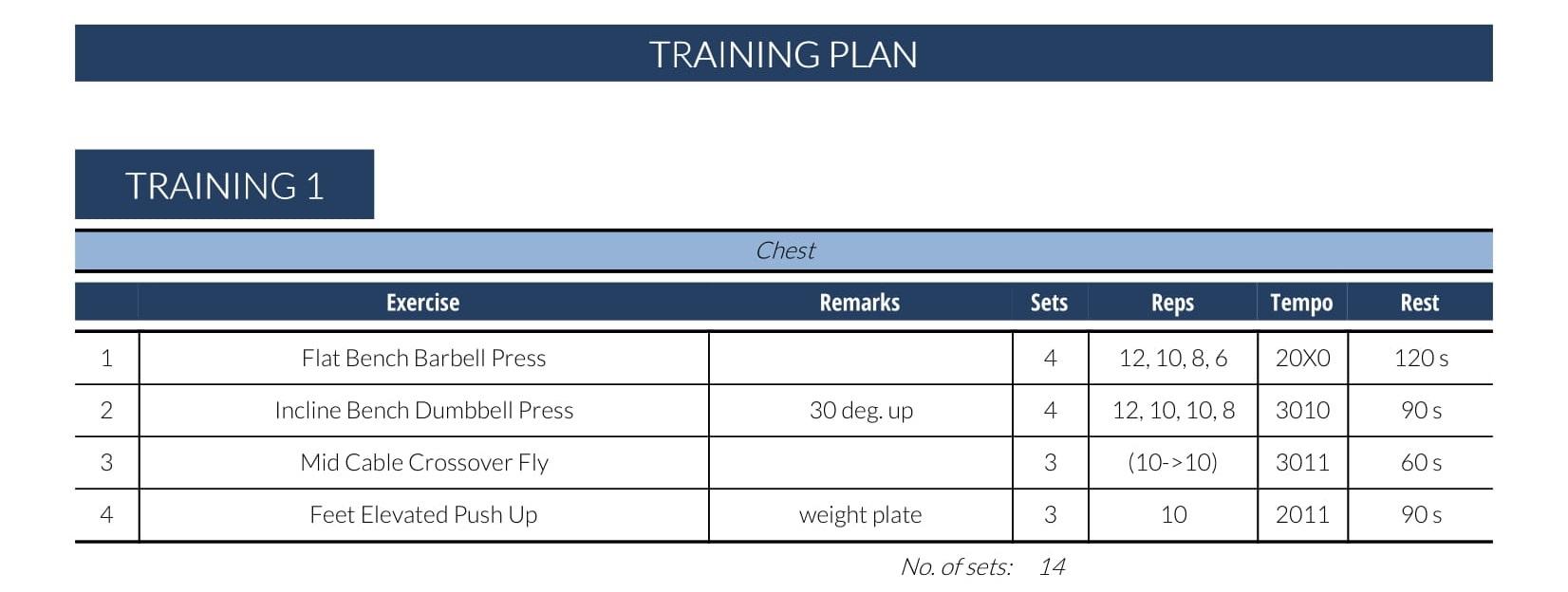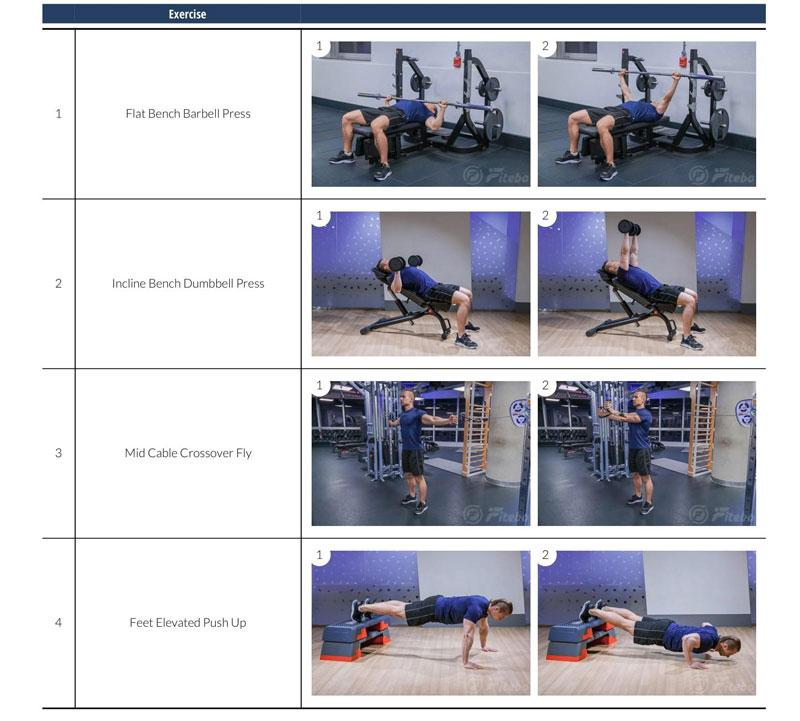How to train chest?
Friday, august 12, 2022 You will read this text in min.
The pectoral muscles (musculi thoracis) are probably one of the most eagerly and most frequently trained muscle groups by men. However, it’s true that this party can cause quite a lot of difficulties in terms of hypertrophy (hyperplasia). So what makes it so hard to increase their muscle mass? Apart from exceptional cases that show great genetics for building these muscles, most people have to spend a lot of time and work on them.

The chest, as an example of a muscle group that is largely composed of fast twitch muscle fibers, requires relatively heavier weights to stimulate it. In everyday life, there is rarely a need to engage the pectoral muscles so strongly, so when you start your adventure with strength training, you’ll practically start building it from scratch.
Chest training in women
In the case of women, the pectoral muscles are significantly weakened due to anatomical conditions, as are, for example, the lats. Therefore, it’ll be even more difficult for women to engage them in effective work. It’s obvious that most women are very concerned about chest training in order to avoid overexposure of the muscles that’ll be associated with a masculine appearance. In a way, this is justified, because the strongly defined pectoral muscles in women aren’t considered aesthetic by most people.
Meanwhile, it turns out that sensible stimulation of the chest muscles in women brings great results in terms of firming this area. This is due to the fact that the pectoral muscles under the fat glands have a slight effect of pushing the breasts forward.
An additional advantage is a slight reduction in the effect of visible ribs, which very often occurs, especially with a low level of adipose tissue.
Chest training and the basics of anatomy
When it comes to developing the pectoral muscles, it’s extremely important to train and engage them at different angles and using a variety of strength curves.
If you came here, it’s most likely to learn how to train the chest, and not to find out what its functions or structure are. Therefore, this article contains only the most important information related to its structure, which will help shed light on the issue of training this muscle part. To understand well how to train the chest, it’s necessary to refer to the basics of anatomy.
The chest consists of three main parts. Listing them from the top, they are:
- the clavicular part,
- the sternocostal part,
- the abdominal part.
As a rule, it’s the upper part of the chest (sternocostal and clavicular) that requires more work to shape the body than the lower (abdominal). This doesn’t mean that you should give up your flat bench press overnight and start doing all the exercises on an incline bench.
The motor unit involvement is always greatest in lying flat movements. Therefore, all exercises of this type should be considered as the main ones when developing a training plan for the chest. After you complete the basic exercise, it’s usually only then worth considering doing the exercise on an incline or a decline bench. Another strategy is to use the Incline Bench Press first, e.g. as a form of pre-fatigue.
How to train the chest?
For optimal results, you should take care of a properly adjusted training and diet plan and pay attention to regeneration, as in the case of training any other muscle part.
There are many individual recommendations for chest training based on different anatomical features and factors, including such as: shoulder length, position and width of the shoulder girdle, tendency to take over the work of the pectoral muscles by the triceps muscles of the arms or deltoid muscles, past injuries.
Below are some general guidelines to consider in chest training:
1. The main multi-joint exercises should form the basis of chest training.
2. Accessory exercises should be an addition to building training volume.
3. Work in full range of motion to avoid overstretching the chest muscles, so as not to create additional stress on the shoulder joint.
4. You should take care of the correct tension of the back muscles to properly stabilize the posture while performing the exercises.
5. The natural curvature of the spine should be kept, the lumbar section can be arched by making the so-called "bridging".
6. Keep your head in a neutral position, in line with your spine, and look straight ahead.
7. The shoulder blades should be pulled back and down (retraction and depression) and the chest should be pushed forward.
8. Position your elbows below the shoulder girdle, keeping the elbows at a 45-degree angle to ensure efficient operation of the rotator cuff.
9. The legs should provide a fulcrum and be on stable ground, and stay still throughout the series.
10. It’s necessary to keep wrists stiffly in neutral position to avoid incorrect work within this joint.
Sample chest training
Below is a training plan that is suitable for both beginner and intermediate level. According to a very simple scheme, four exercises have been proposed that’ill enable the effective involvement of the pectoral muscles.


Elements of the chest training plan generated in the fitebo.com application: training plan, instruction with pictures of exercises.
Summary
The topic of chest training may seem complicated at first, despite the fact that it’s a muscle part that usually responds well to appropriately matched training stimuli.
As long as you do exercises in accordance with the basics of anatomy, and stick to the following simple rules: choose the exercises correctly, ensure regeneration and diet, pay attention to the technique, take care of training progress, change your training plan at the right moment and strengthen your weak links, you will be able to successfully develop distinctive chest muscles.
1. Bochenek, A., and Reicher, M., "Anatomia człowieka", Tom I, Wydawnictwo Lekarskie PZWL, Warszawa 2012.
2. Standring, S. (2005). "Gray's Anatomy". Elsevier, s. 962. ISBN 0-443-07168-3.
3. Gray, H., and Lewis, W. (1918). "Anatomy of the Human Body" (twentieth ed.). Philadelphia and New York: Lea and Feibiger. Retrieved 13 September 2016.